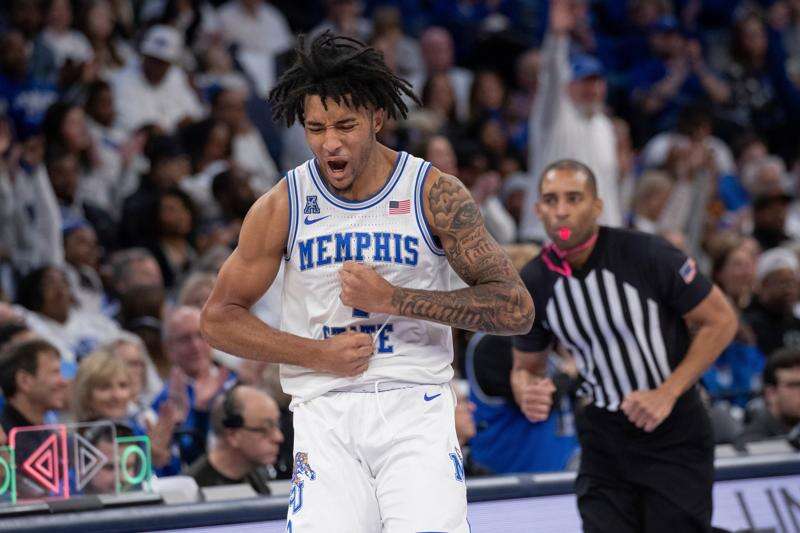Sports
Transient Transfers Transform College Basketball Landscape

The landscape of college basketball is undergoing a seismic shift as the phenomenon of transient transfers becomes increasingly prevalent. Players like PJ Haggerty, who has already played for Memphis and Tulsa before joining Kansas State, exemplify this trend. The NCAA opened the transfer window in August 2022, allowing players to switch schools without the traditional redshirt year, fundamentally altering how teams are built in the sport.
The influx of players transferring between programs has created an environment reminiscent of free agency in professional sports. Haggerty’s journey is not unique; he is one of many players opting for new beginnings in pursuit of opportunities that align better with their basketball ambitions. The introduction of compensation for name, image, and likeness has further complicated the situation, enabling athletes to monetize their talents while navigating these changes.
Haggerty articulated his philosophy regarding team loyalty, stating, “I always felt like if you take care of the name on the front of your jersey, the name on the back will always be taken care of.” His moves from school to school have primarily been driven by basketball considerations, whether it was the coaching staff, the playing style, or the competitive environment of a new conference.
Each transfer, however, brings with it a myriad of challenges. As players adjust to new teammates and coaching philosophies, they face the complexities of acclimating to a different campus and city. Such transitions can disrupt academic progress, as not all credits transfer seamlessly, leaving athletes to navigate a complicated puzzle of course requirements.
Scott Drew, head coach at Baylor, expressed concerns about the implications of frequent transfers on student-athletes’ educational journeys. He suggested that a more structured approach would benefit all parties involved, allowing players a single transfer without penalty while requiring them to sit out for subsequent moves. “We know that transferring four schools in four years is going to be harder to get a degree than transferring one time,” Drew noted.
The trend of transient transfers is evident across the college basketball spectrum, particularly in programs undergoing coaching changes. For instance, Iowa recently saw eleven players leave after the firing of Fran McCaffery and the hiring of Ben McCollum. This mass exodus left McCollum with a significant rebuilding task, necessitating the incorporation of both freshmen and transfer players to fill the gaps.
Bennett Stirtz, a potential first-round NBA draft pick, is among those who followed McCollum, transitioning to Iowa from Drake after previously playing under him at Northwest Missouri State. Similarly, Cam Manyawu also transferred from Wyoming to Drake before joining him at Iowa. Their experiences illustrate the ongoing trend of players seeking familiarity with coaching staff, leading to a network of transfers across programs.
In contrast, a smaller number of players are choosing to remain with a single program throughout their college careers. Nick Martinelli of Northwestern emphasized the importance of stability, stating, “With the transfer portal, people are struggling to find a home. I wanted to have a home that I can come back to.” This perspective highlights the challenges faced by transient transfers as they seek belonging within a constantly shifting environment.
Another rarity, Nate Bittle, is entering his fifth season with Oregon. He appreciates the continuity in his program, which allows him to mentor incoming transfers. “We know the offense, defense, we know what coach Dana Altman wants,” he said. Bittle’s long-standing association with Oregon has allowed him to establish a deep understanding of the team’s dynamics.
As college basketball evolves with the rise of transient transfers, both players and coaches are adapting to this new reality. The dual challenges of maintaining competitive rosters while supporting athletes’ academic goals will continue to shape the future of the sport. The implications of these changes extend beyond the court, as they redefine what it means to be a student-athlete in today’s collegiate landscape.
-

 Business2 weeks ago
Business2 weeks agoIconic Sand Dollar Social Club Listed for $3 Million in Folly Beach
-

 Politics2 weeks ago
Politics2 weeks agoAfghan Refugee Detained by ICE After Asylum Hearing in New York
-

 Health2 weeks ago
Health2 weeks agoPeptilogics Secures $78 Million to Combat Prosthetic Joint Infections
-

 Science2 weeks ago
Science2 weeks agoResearchers Achieve Fastest Genome Sequencing in Under Four Hours
-

 Lifestyle2 weeks ago
Lifestyle2 weeks agoJump for Good: San Clemente Pier Fundraiser Allows Legal Leaps
-

 Health2 weeks ago
Health2 weeks agoResearcher Uncovers Zika Virus Pathway to Placenta Using Nanotubes
-

 World2 weeks ago
World2 weeks agoUS Passport Ranks Drop Out of Top 10 for First Time Ever
-

 Business2 weeks ago
Business2 weeks agoSan Jose High-Rise Faces Foreclosure Over $182.5 Million Loan
-

 Top Stories1 week ago
Top Stories1 week agoChicago Symphony Orchestra Dazzles with Berlioz Under Mäkelä
-

 World2 weeks ago
World2 weeks agoRegional Pilots’ Salaries Surge to Six Figures in 2025
-

 Science2 weeks ago
Science2 weeks agoMars Observed: Detailed Imaging Reveals Dust Avalanche Dynamics
-

 Entertainment2 weeks ago
Entertainment2 weeks agoJennifer Lopez Addresses A-Rod Split in Candid Interview







